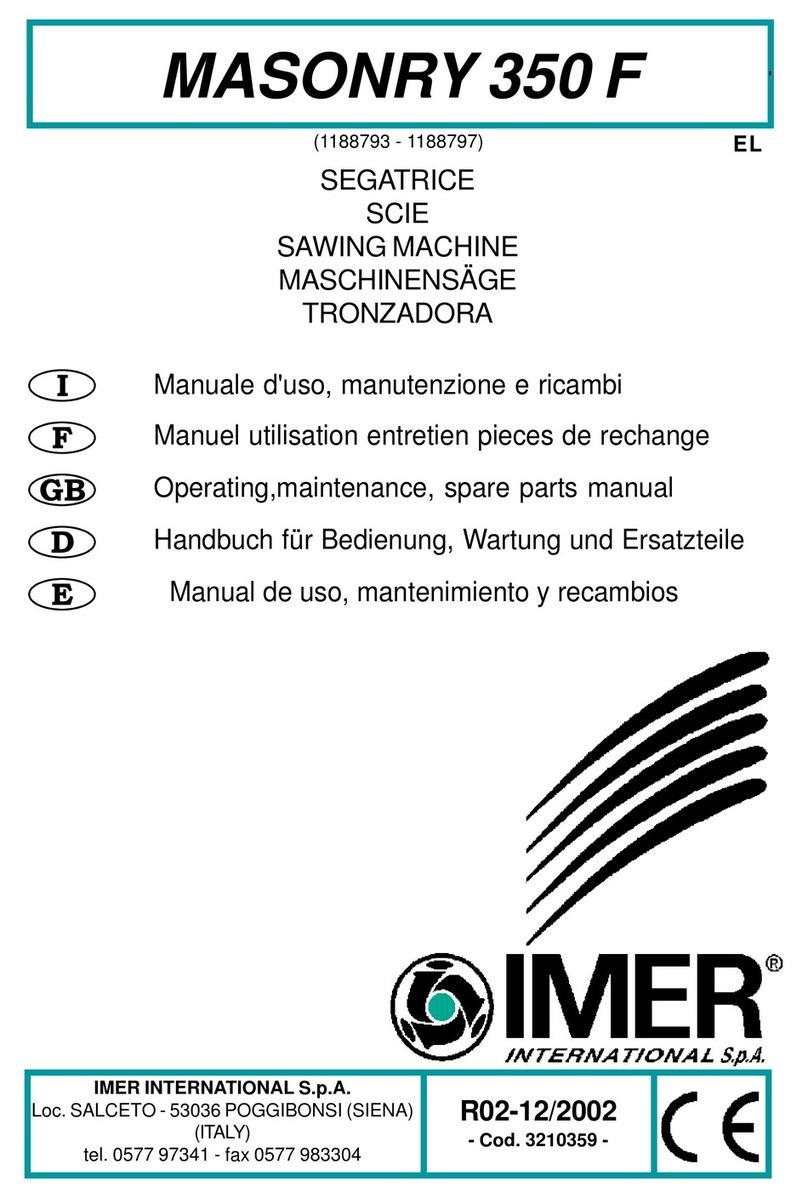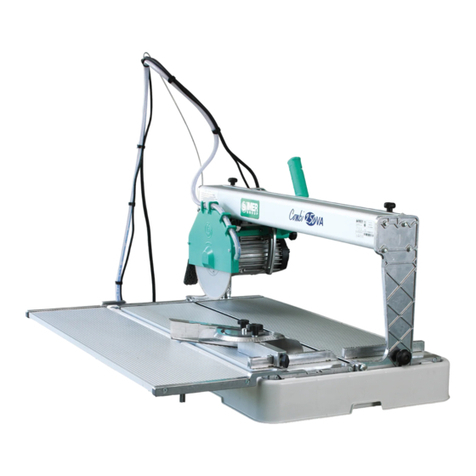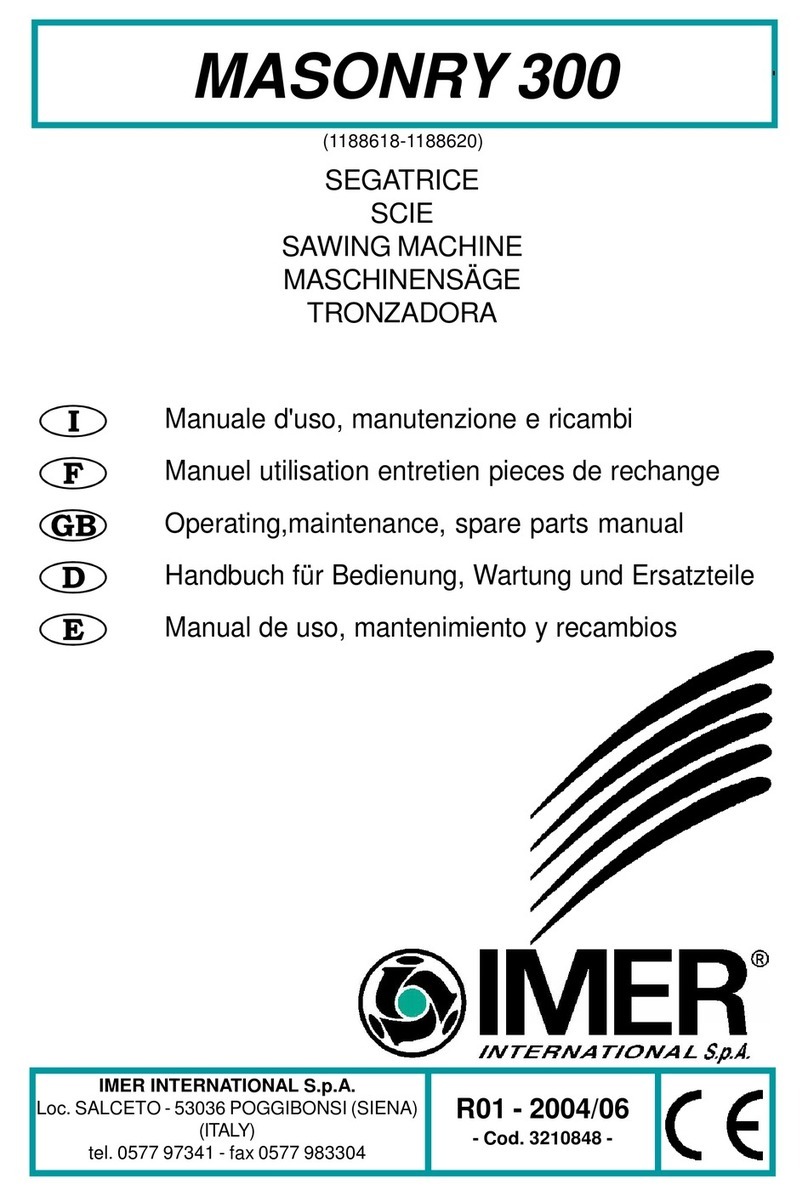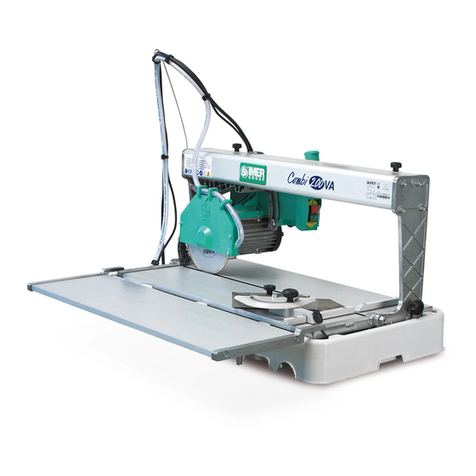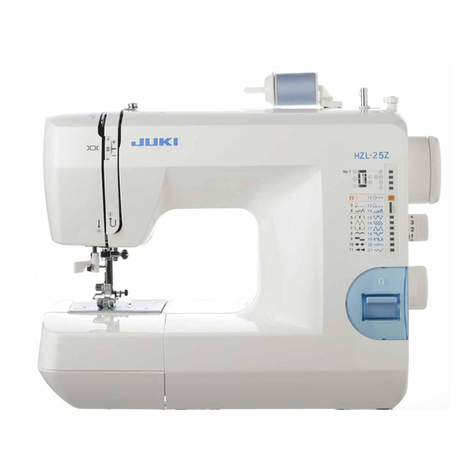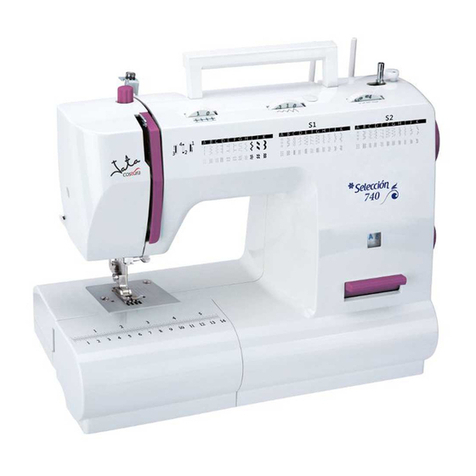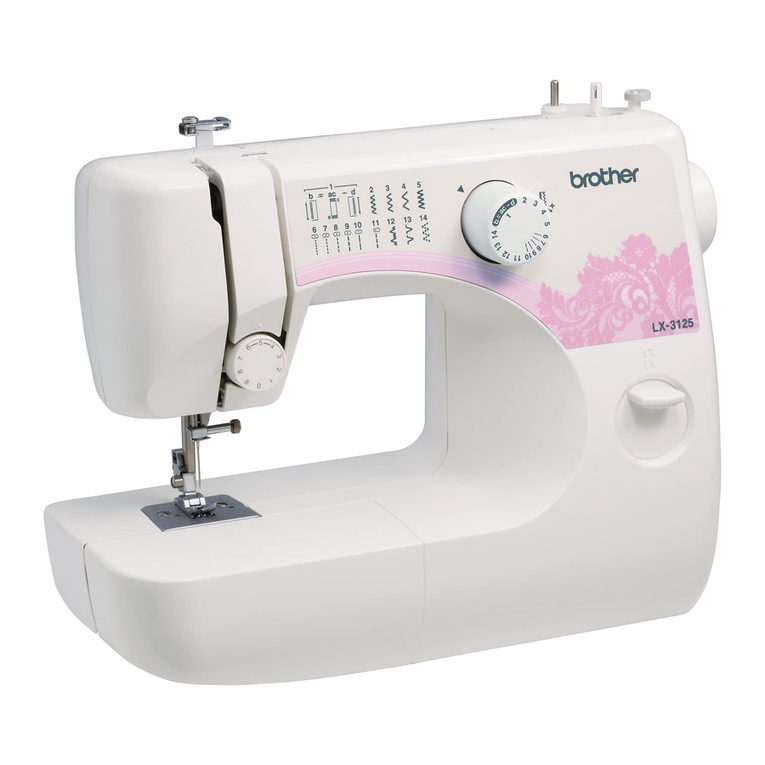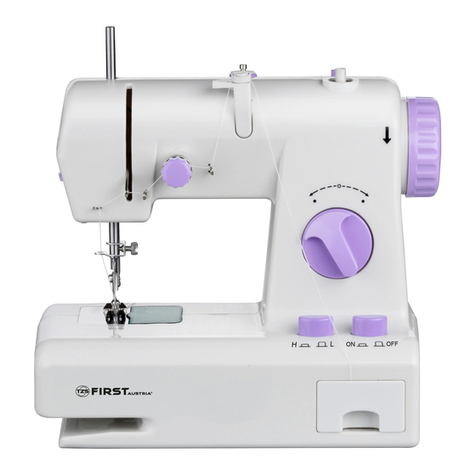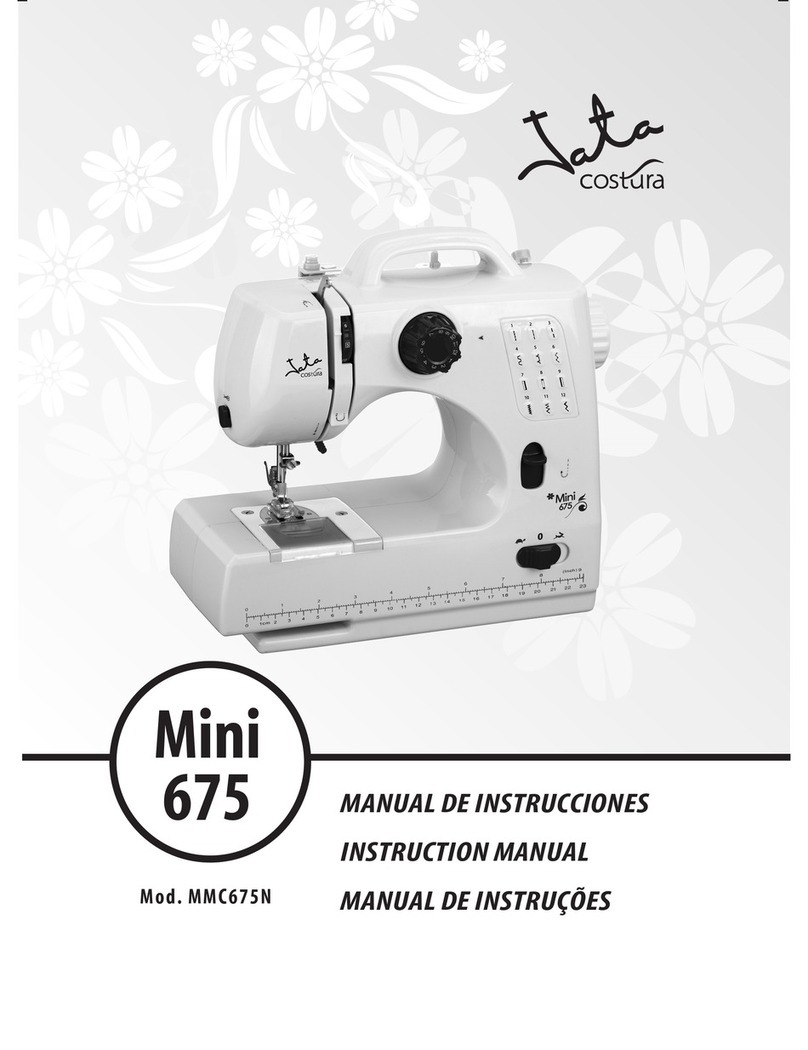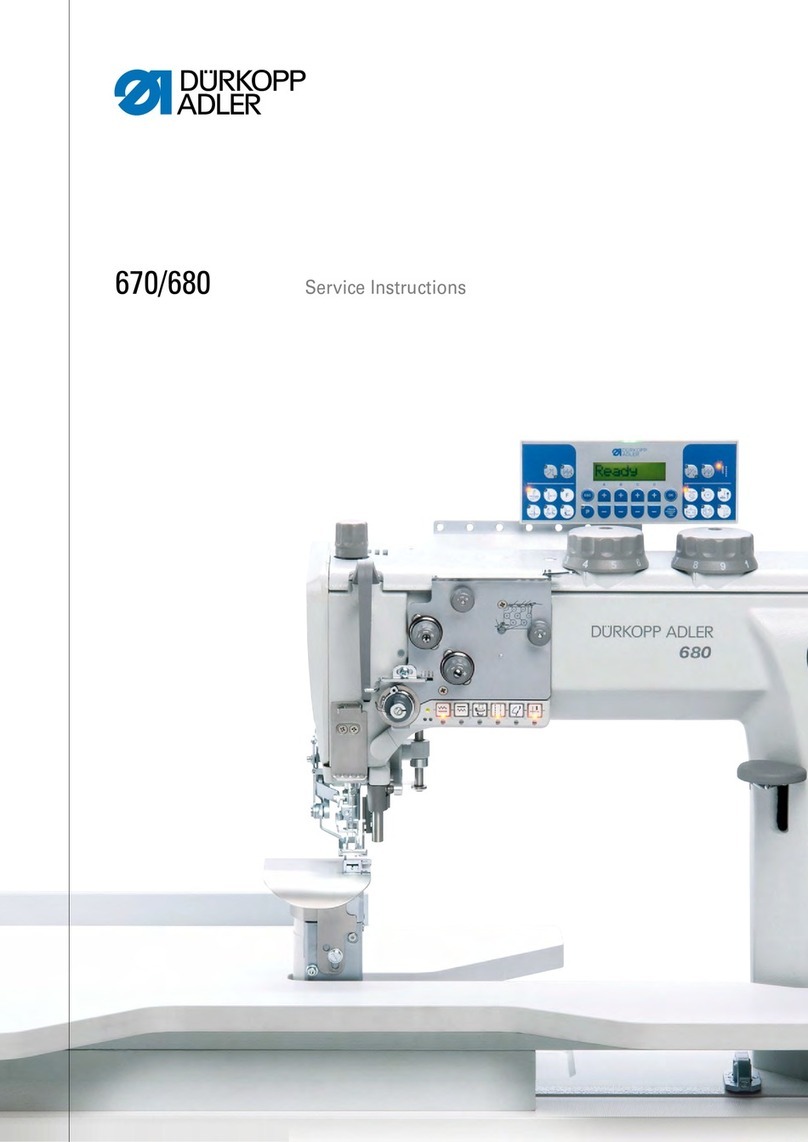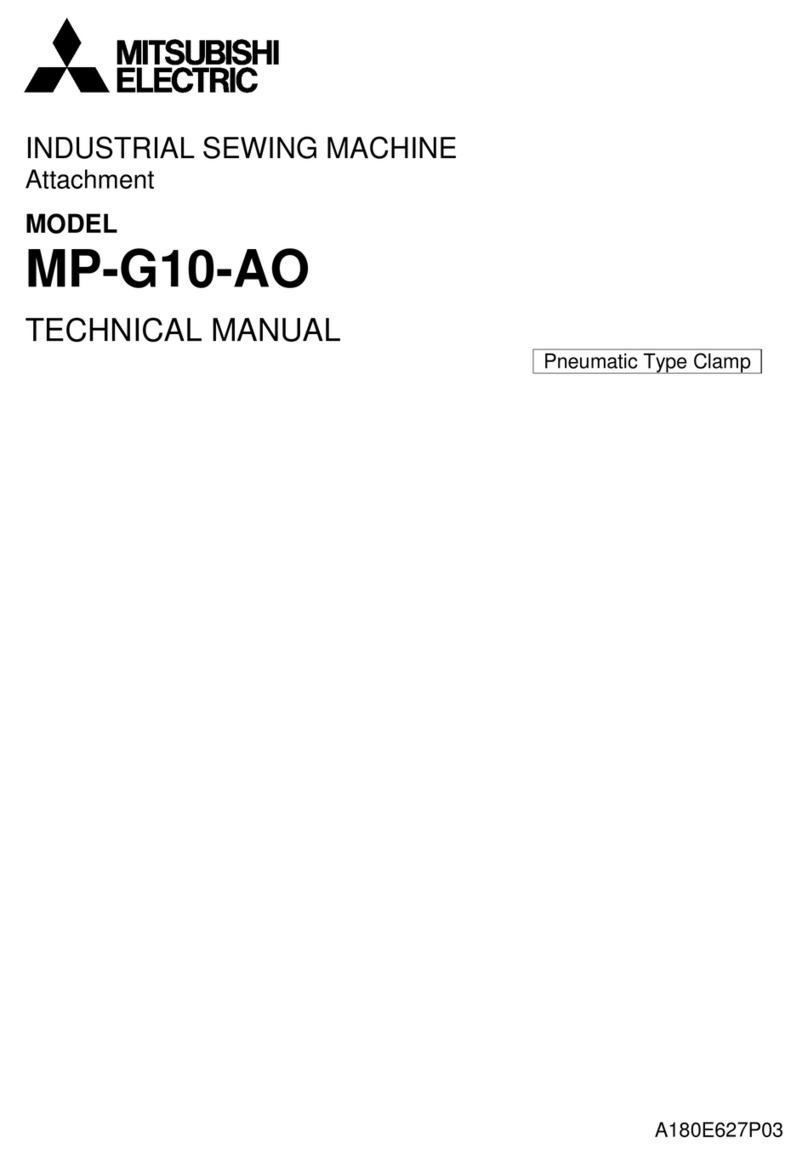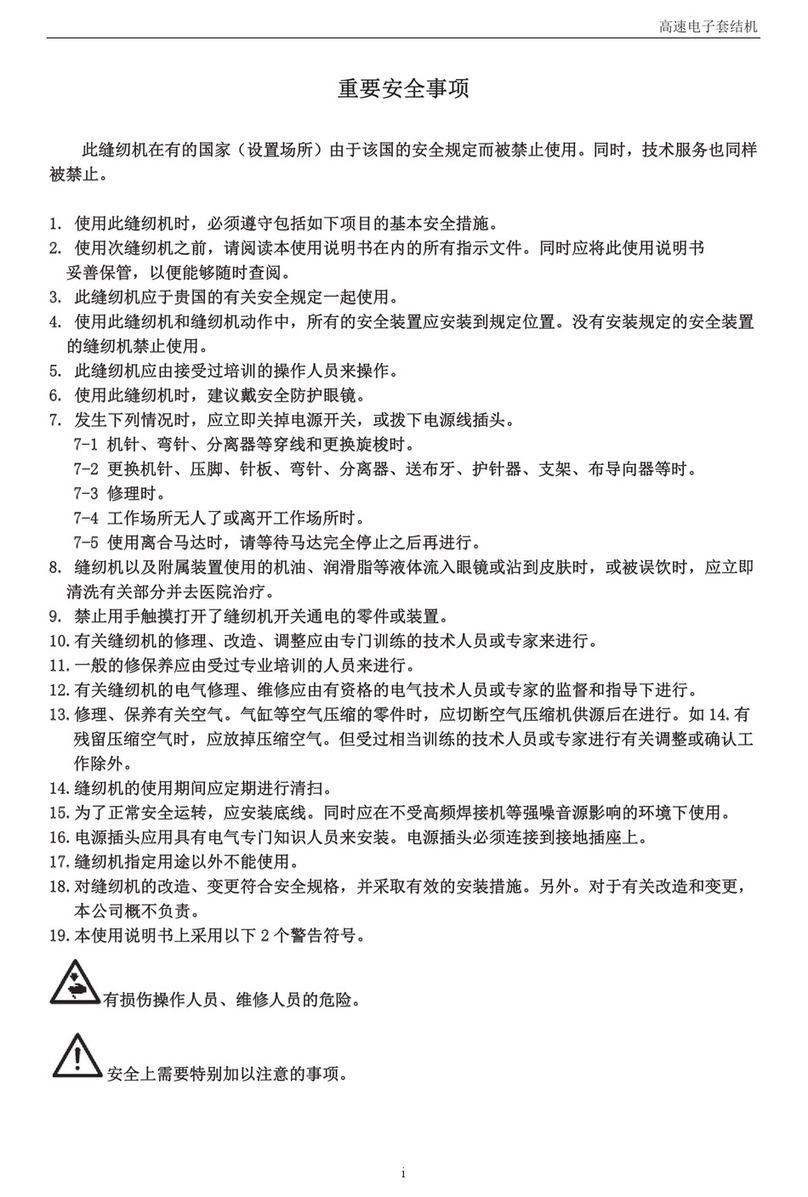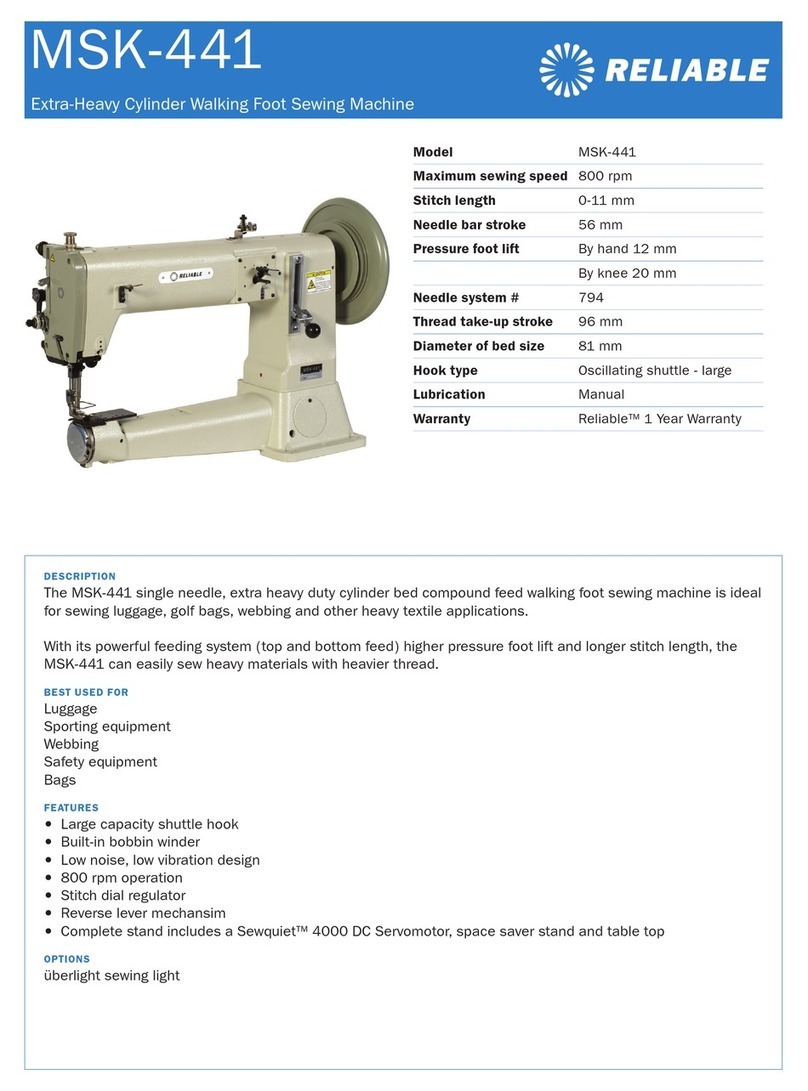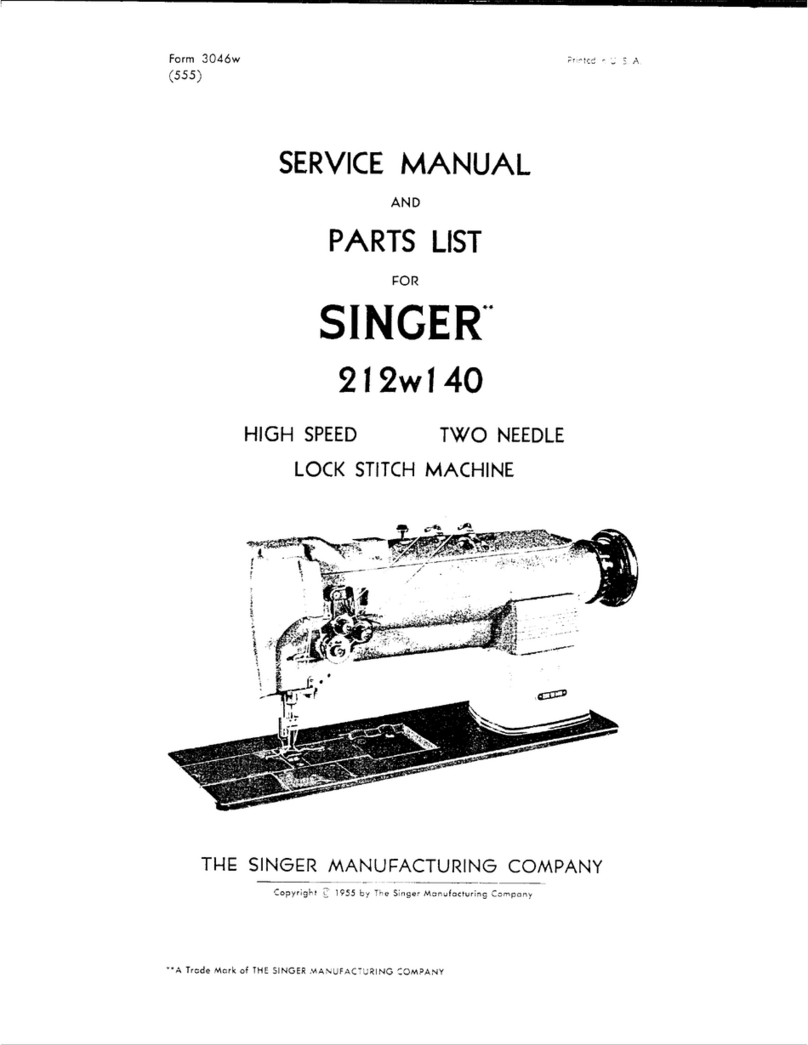IMER COMBI 350/600 Guide

IMER INTERNATIONAL S.p.A.
53036 POGGIBONSI (SIENA) loc. SALCETO
(ITALY)
tel. (0577) 983300 - fax (0577) 983304
COMBI 350/600 - 350/1000
Imanuale uso manutenzione ricambi
Fmanuel utilisation entretien pieces de rechange
GB Operating,maintenance, spare parts manual
DHandbuch für Bedienung, Wartung und Esatzteile
Emanual de uso, mantenimiento y recambios
INTERNATIONAL S.p.A
IMER
06/2001 - R5
- Cod. 3201536 -
(FAM. AK012 - AK013)
SEGATRICE
SCIE
SAWING MACHINE
MASCHINENSÄGE
TRONZADORA
(1188720 - 1188750 -1188724 -1188754)

8
(R5)
COMBI 350/600 - 350/1000
IMER INTERNATIONAL S.p.A.
GBDear Customer,
Congratulations on your choice of purchase: IMER saws are the
result of years of experience and is equipped with all the latest
technical innovations.
WORKING IN SAFETY
To work in complete safety, read the following instructions
carefully.
- This OPERATION AND MAINTENANCE manual must be kept on
site by the person in charge, e.g. the SITE FOREMAN, and must
always be available for consultation.
- The manual is to be considered integral part of the machine and
must be kept for future reference (EN 292/2) until the machine is
disposed of. If the manual is damaged or lost, a replacement may
be requested from the saw manufacturer.
- The manual contains important information regarding site
preparation, machine use, maintenance procedures, and requests
for spare parts. Nevertheless, the installer and the operator must
both have adequate experience and knowledge of the machine prior
to use.
- To guarantee complete safety of the operator, safe operation and
long life of equipment, follow the instructions in this manual carefully,
and observe all safety standards currently in force for the prevention
of accidents at work (use of safety footwear and gloves in accordance
with S.I. N°3073 of 30/11/92).
Safety glasses or a protective visor must be worn at
all times.
MAKE SURE THAT SIGNS ARE LEGIBLE.
It is strictly forbidden to carry out any form of
modification to the steel structure or working parts of the
machine.
- IMER INTERNATIONAL declines all responsibility for non-
compliance with laws and standards governing the use of this
equipment, in particular; improper use, defective power supply, lack
of maintenance, unauthorised modifications, and partial or total failure
to observe the instructions contained in this manual.
1. TECHNICAL DATA
2. DESIGN STANDARDS
COMBI 350 saws are designed and manufactured according to the
following standards: I.E.C. 34.4;
CEI EN60204; EN 292/2.
3. NOISE EMISSION LEVEL
Operator exposure to sound emission levels (continuous sound
pressure levels equal to A weighting); the COMBI 350 saw noise
emission level during cutting is 93 dB(A) with continuous rim blade.
4. CUTTING SPECIFICATIONS
This saw model has been specially designed by IMER for cutting
stone, ceramics, marble, granite, concrete and similar materials.
Only water-cooled diamond blades with continuous or segmented
edges must be used. Under no circumstances must dry cutting
blades be used or materials other than those specified above. IMER
INTERNATIONAL declines all responsibility for damage caused by
improper use of the above machine.
5. CUTTING CAPACITY
- Max. thickness (mm): 120 (90°); 70 (45°)
- Workpiece width (mm): max. 520; min 50
- Length: COMBI 350/600 COMBI 350/1000
thk. x l (mm) 25 x 600 25 x 1000
60 x 560 60 x 960
(*) 90° cut from above
120 x 530 120 x 930
120 x 700 (*) 120 x 1100 (*)
(**) 45° 45 x 530 (**) 70 x 930 (**)
6. WARNING
- Do not load the saw with workpieces that exceed the specified
weight (max. 40 kg)
- Ensure stability of machine and workpiece before, during or after
cutting. Install supplementary support surfaces at the same height
as the worktable.
- Respect the environment; use suitable receptacles for collection
of cooling water contaminated with cutting dust.
7. SAFETY PRECAUTIONS
IMER saws are designed for work on construction sites and under
conditions of natural light and in workshops under conditions of
natural or artificial lighting of minimum 500 LUX.
The machine must never be used in environments
subject to risks of explosion and/or underground sites.
- IMER saws may only be used when fitted with all required safety
devices which must be in perfect condition.
- Never use makeshift and/or faulty power cables.
- Make electrical connections on the construction site where they
will not be subject to damage. Never stand the saw on power supply
cables.
- Lay power cables where they are not subject to risk of damage or
contact of connectors with water. Only use connectors fitted with
water-spray protection (IP55).
- Repairs to electrical installations must only be carried out by
qualified technicians. Always ensure that the machine is
disconnected from the power supply and is completely immobile
during repairs and maintenance operations.
Connect the machine to a suitable equipotential
earthing plant on the construction site with wire braid
of minimum 16 mm² section. The connection point is
identified by a screw welded to the frame (see Fig.1),
&RPEL &RPEL
%ODGHUSP USP
%ODGHGLDPHWHU PP
%ODGHPRXQWLQJKROH PP
0RWRUUDWLQJ .Z
0RWRUUSP USP
&XWWLQJWDEOH
GLPHQVLRQV PP [ [
2YHUDOOGLPHQVLRQV PP [[ [[
2YHUDOOGLPHQVLRQV
IRUWUDQVSRUW PP [[ [[
:HLJKW .J
:HLJKWIRUWUDQVSRUW .J
%ODGHURWDWLRQ
GLUHFWLRQVHHQIURP
EODGHFODPSLQJ
IODQJH
$17,&/2&.:,6(
&XUUHQW $
9ROWDJH 9
)UHTXHQF\ +]
1 TELESCOPIC LEG
2 SPRAY GUARD
3 MOTOR
4 BLADE SUPPORT ARM
5 WATER PUMP
6 GUIDE
7 MAIN SWITCH
8 WORKTABLE
9 WATER TANK
10 BLADE GUARD
11 EARTHING SCREW
Fig.1
Pay special attention to warnings bearing the
following symbol.

9
(R5)
COMBI 350/600 - 350/1000
IMER INTERNATIONAL S.p.A.
and on the rating plate by the
earthing symbol.
- Stop the saw only by means of the main switch.
- The symbol shown on the label (see left) indicates
the warning ENSURE ALL PROTECTION DEVICES
ARE INSTALLED AND IN PERFECT CONDITION
BEFORE SWITCHING ON THE MACHINE
8. ELECTRICAL SAFETY
IMER saws comply with EN 60204-1; and are fitted with:
- protection device against automatic re-start after power failure.
- Short-circuit cutout device
- Motor overload cutout switch
9. TRANSPORTATION (Ref. Fig.2)
WARNING! Always remove the plug from the power
socket before moving the saw, and lock head support carriage
movement by means of the relative knob (ref. 3). To transport
the machine use slinging equipment with 4 rope legs, fixing
the hooks to the relative attachments.
10. INSTALLATION (Ref. Fig.2)
Fix the hooks to the relative attachments on the machine and lift
the machine out of its package.
- Unlock the legs by sliding out split pins (ref.2) and pins (ref.1).
- Lock the legs at working height. Refit the pins in the leg supports
and insert the split pins.
- Install the machine on a completely even and stable surface.
11. ELECTRICAL CONNECTION
Ensure that there is an overload cutout device fitted
up-line on the power line. If necessary, install an IMER quick
connect residual current circuit breaker (RCCB) (code no.
1169245 available in kit form).
Ensure that the mains voltage corresponds to that specified for the
machine: 380 V/50 Hz (for three-phase motors) or 230 V/50 Hz
(for single-phase motors).
All power supply installations must comply with CEI 64-8
standards (harmonised document CENELEC HD384).
The electrical power cable must be suitably sized to avoid voltage
drops. Cable drums (with collector rings) must not be used.
Cable dimensions will vary according to the start-up current and
length of cable. In general cable sizes of 4 x 4 mm² are sufficient for
lengths up to 50 metres. After installation always carry out voltage
testing under load conditions, both at start-up and during operation.
During operation, voltage drops must never exceed 5%. In the case
of longer cables or a power supply network subject to variations,
use cables with a section of at least 6 mm². Cables used on
construction sites must be fitted with suitable external sheathing
that is resistant to wear, crushing and extreme weather conditions.
12. MACHINE START-UP
Before connecting the machine to the power supply:
1 - Ensure that the metal structure is connected to an earthing
plant as indicated in Section 7 Safety Precautions.
2 - Ensure that the tank contains sufficient cooling water.
3 - Ensure that the power circuit corresponds to the requirements
as indicated in Section 11 Electrical connections
4 - Connect the machine to the power supply
5 - Set the switch to 1 and when the motor is started return to
position 0 after ensuring that cooling water reaches the blade.
6 - Check that the direction of blade rotation corresponds to that
indicated by the arrow on the blade guard.
7 - ON THREE-PHASE MOTOR MODELS (380 V/50 Hz): if blade
rotation is incorrect, invert the two wires inside the power plug.
Repeat operation indicated in point 5.
8 - If all is in order, proceed with cutting.
13. EMERGENCY STOP
In the event of emergency, stop the machine by
pressing the stop control switch.
- The motor is fitted with an overload cutout device. If the motor
overheats, it will automatically shut down. Allow motor to cool
before re-starting.
- The motor is protected against automatic re-start after
interruptions due to power failure. To resume operation, when
power is re-connected, repeat machine start-up procedure.
14. BLADE INSTALLATION (Ref.Fig.3)
By means of a hex wrench no.10, remove front screws (ref.1) and
loosen the other two screws (ref.2) which secure the blade guard.
Turn the guard clockwise to gain access to the securing screw
(ref.4). Use a hex wrench no. 13 to remove the screw (turn anti-
clockwise). Remove the mobile flange and check that the flanges,
disc shaft and blade are not damaged.
Never use worn blades.
Only use blades that are designed for the number of
revolutions indicated on the machine rating plate.
Check that blade rotation corresponds to that
indicated on the blade guard.
Centre the blade against the fixed flange, position the mobile flange
and tighten the securing screw by means of a hex wrench no. 13
(turn clockwise). Return the guard to its original position and lock
by means of screws (ref.1 and 2).
- Ensure that the blade guard is locked securely into position.
WARNING! An incorrectly installed blade, or a screw
insufficiently tightened can provoke damage to the machine
or injury to persons.
- Note that the blade must have an external diameter of 350
mm., a central hole diameter of 25.4 mm and max. thickness
of 3 mm.
- Check that the blade to be used is suitable for the material to
be cut.
15. USE
Leave a space of 150 cm around the machine to ope-
rate in full safety.
- Do not allow other persons to approach the machine during cutting.
- Never use the machine in fire-risk areas. Sparks can cause fire or
explosions.
- Make sure that the machine is switched off before positioning or
handling.
- Always ensure that the blade is free of any contact before start-
up.
- Ensure correct installation of all protective devices.
Ensure that blade rotation corresponds to the
indications on the blade guard.
Before starting work, fill the water tank. Top up during operation
whenever necessary: N.B. the pump suction hose must always
remain immersed in water.
Insert the plug in the power socket.
WARNING! For safety purposes the removal of
protective guards from the machine is strictly prohibited
The machine is protected against overload.
WARNING! Always switch off the machine before
carrying out blade adjustment.
15.1 VERTICAL BLADE MOVEMENT (Ref. Fig. 4)
To raise or lower the blade, slacken knob (ref.2) by turning it anti-
clockwise. Set blade support (ref.1) to the required position and
lock by tightening the knob fully (ref.2).
Ensure that the locking knob is tightened fully before starting
work.
15.2 BLADE POSITIONING FOR CUTS AT 45° (Ref.Fig.5)
- Slacken knobs (ref.1) on both sides of the machine. The blade
support arm (ref.2) is unlocked and so can be set to its stroke limit,
i.e. inclined at 45° with respect to the worktable. Tighten the two
knobs fully to lock into position.
- To bring the blade back to the vertical position (pos.0) carry out
the above operations in reverse order.
- Ensure that the locking knobs (ref.1) are tightened fully before
starting work.
15.3 CUTTING
- Before cutting, check that the blade is aligned with the cutting
line.
- Place the workpiece on the worktable snugly against the fence.
- Start the motor and wait until the water reaches the blade to
begin cutting.
- Start cutting movement by pulling the carriage towards you
by means of the relative handle (ref.1 fig.6).
- Cutting feed speed must be varied to suit workpiece thickness
and material. Cutting too fast may overload the motor.
15.3.1 CUTS WITH BLADE LOWERED FROM ABOVE
(Ref. Fig.8)
Bring the blade support to its highest position and lock. Position
the workpiece on the worktable. Start the machine, unlock the blade
support and begin vertical cutting until the blade reaches its lowest
point. Lock the support once more and proceed with horizontal
cutting.
15.3.2. GROOVE CUTS (Ref. Fig.8)
To make shallow groove cuts, the opposite procedure to through-
GB

10
(R5)
COMBI 350/600 - 350/1000
IMER INTERNATIONAL S.p.A.
GBcutting must be used, i.e. by pushing the head unit instead of pulling
it. Move the blade support (ref.1) to its limit position (closest to the
operator) and lock, after having positioned the blade at the required
cutting height. Place the workpiece against the fence (ref.2). Start
the machine and begin cutting by pushing the blade support in the
direction of the arrow.
15.3.3 BLADE CHANGE
To change the blade refer to section 14. BLADE INSTALLATION.
16. MAINTENANCE
WARNING! Always switch the machine off and remove
the plug from the power socket before carrying out any
maintenance operations .
Always check that the protective guards are in the
correct position and in perfect condition.
As there is the continuous risk of inadvertent damage
to the electric cables, these must be checked regularly each
time before the machine is used.
Never leave the machine out in the open. Make sure that it is stored
in a sheltered area away from extreme weather conditions.
Replace worn or faulty components with original spare parts.
16.1 TANK CLEANING ON WORK COMPLETION
On completion of work, empty the tank and remove. Clean
thoroughly to remove cutting residue.
16.2 TANK REMOVAL (Ref.Fig.7)
Lift the tank (ref.1) to detach from its supports (ref.2) and remove
from the side indicated by the arrow.
16.3 WORK SURFACE CLEANING
Always keep work surfaces clean. Residual dirt can impair cutting
precision.
16.4 GUIDE RAIL CLEANING
The horizontal guide elements on the carriage are protected against
dirt build-up by scrapers. However we advise thorough cleaning of
the guide rails to ensure correct operation.
WARNING! Do not use any type of lubricant on the guide rail.
16.5 CARRIAGE CLEARANCE ADJUSTMENT (Ref. fig.9)
LATERAL ADJUSTMENT: turn adjustment screw 1 gradually
clockwise using a hex wrench no.3, so that the internal roller comes
into contact with the bar. Take care not to exert too much pressure.
Repeat the same operation with the other adjustment screws
according to the order indicated in the figure. Adjust vertical
clearance by means of the screws located on the lower part of
carriage (A). On completion, if carriage travel is not smooth, slacken
the adjustment screws by turning the wrench anti-clockwise; if
clearance has not been eliminated repeat the above operation.
16.6 CLEANING AND MAINTENANCE OF COOLING CIRCUIT
- If water does not reach the blade stop the machine immediately to
avoid blade damage.
- After switching off the machine ensure that the water level is
sufficient.
- If necessary, after disconnecting the machine from the power
supply check that the tap, hose and pump filter are not blocked
- If necessary, check that the impeller rotates freely (after extended
periods of disuse)
- If necessary, remove the pump and check that the pump/motor
coupling is in perfect condition.
16.7 DRIVE BELT REPLACEMENT
- Disconnect the machine from the power supply
- Remove the water hose connection by loosening the hose clamp
on the blade guard.
- Remove the blade, the two flanges, the blade half-guard securing
screws, the locking knob (ref.1, chart 02) and remove the blade
external half-guard (motor side).
- Remove the blade shaft with pulley from the bearing (ref.27, drawing
02) and fit into the bearing of the half-guard previously removed
(ref.14, chart 02).
- Fit the new belt onto the two pulleys and refit the belt tensioner.
- Refit the seal on the edge of the guard and ensure that it is in good
condition and that the two locating pins are in the correct position.
- Refit the guard inserting the blade shaft into the bearing (ref.27,
chart 02) taking care to align the screw (ref.51, drawing 02) located
on the slot of the head fulcrum (ref.19, drawing 02) with the locking
handle hole (ref.1, drawing 02).
- Join the two blade half-guards using the two locating pins to align
correctly.
- Screw in the two blade half-guards by tightening diagonally opposite
screws alternately.
- Screw in and tighten the locking handle before installing the blade.
17. TROUBLESHOOTING
N.B.: Before carrying out any maintenance
operations, switch off the machine, set the switch to 0 and
remove the plug from the power socket.
)$8/7 &$86( 5(0('<
0RWRUGRHVQRWVWDUW
ZKHQVZLWFKLV
WXUQHG
'HIHFWLYHSRZHU
FDEOH
3OXJQRWLQVHUWHGLQ
VRFNHWFRUUHFWO\
3RZHUFDEOHIURP
SOXJWRFRQWUROSDQHO
GHWDFKHG
/RRVHZLUHLQVLGH
PRWRUFLUFXLWERDUG
$ZLUHKDVEHFRQH
GLVFRQQHFWHGLQVLGH
WKHSDQHO
)DXOW\PDLQVZLWFK
7KHRYHUORDGVDIHW\
GHYLFHKDVEHHQ
DFWLYDWHG
&KHFNSRZHUFDEOHV
(QVXUHFRUUHFW
FRQQHFWLRQ
&RQQHFWFDEOHUH
&RQQHFWZLUH
5HPDNHWKH
FRQQHFWLRQ
5HSODFHVZLWFK
:DLWIRUDIHZPLQXWHV
DQGWKHQWU\UHVWDUWLQJ
WKHPDFKLQH
9HUWLFDOEODGH
PRYHPHQWQRW
VPRRWK
ORFNLQJNQREWRR
WLJKW 6ODFNHQNQRE
/RFNLQJNQREVGR
QRWORFN
WKUHDGLVZRUQ 5HSODFHNQREV
%ODGHLQFOLQDWLRQ
QRWVPRRWK
ORFNLQJNQREWRR
WLJKW 6ODFNHQNQRE
+RUL]RQWDOEODGH
PRYHPHQWQRW
VPRRWK
ORFNLQJNQREWRR
WLJKW 6ODFNHQNQRE
/DFNRIFRROLQJ
ZDWHUVXSSO\WR
EODGH
5HIHUWRVHFWLRQFOHDQLQJDQG
PDLQWHQDQFHRIFRROLQJFLUFXLW
%ODGHGRHVQRWFXW
,QFRUUHFWEODGH
URWDWLRQ
%ODGHLVZRUQ
5HPRYHWKHEODGH
DQGUHILWLQWKHSRVLWLRQ
DVLQGLFDWHGRQWKH
EODGHODEHO
)LWQHZEODGH
0RWRUVWDUWVEXW
EODGHGRHVQRW
URWDWH
%HOWLVEURNHQ 5HSODFHGULYHEHOWVHH
&KDSWHU

17
(R5)
COMBI 350/600 - 350/1000
IMER INTERNATIONAL S.p.A.
Fig.2
Fig.4
Fig.6 Fig.7
Fig.8
Fig.5
Fig.3
Fig.9

18
(R5)
COMBI 350/600 - 350/1000
IMER INTERNATIONAL S.p.A.
$.$. 7$90217$**,27(/$,20217$*(&+Æ66,6)5$0($66(0%/<5$+0(10217$*(0217$-('(/%$67,'25
&20%,&20%,
5,) &2' , ) *% ' ( 127(
9,7( 9,6 %2/7 6&+5$8%( 7251,//2 ;
526(77$ 521'(//( :$6+(5 817(5/(*6&+(,%( $5$1'(/$ ;
92/$17,12 92/$17 +$1':+((/ +$1'5$' 92/$17(
526(77$ 521'(//( :$6+(5 817(5/(*6&+(,%( $5$1'(/$ ;
9,7( 9,6 %2/7 6&+5$8%( 7251,//2 0[
%5$&&,2 %5$6 527$5<%/$'($50 $50'5(+6&+$8)(/ %5$=2 ';
&$55(//2 &+$5,27 &$55,$*( :$*(1 &$552 ';
9,7( 9,6 %2/7 6&+5$8%( 7251,//2 0[
*8,'$ */,66,(5( *8,'(%$5 )h+581* *8Ë$ &20%,
&20%,
$00257,==$725( %87(((1
&$287&+28& '$03(5 672'b03)(5 $0257,*8$'25
3(5129(57,&$/( 3,927 3,1 =$3)(1 3(5129(57,&$/
&86&,1(772 528/(0(17 %($5,1* /$*(5 &2-,1(7( 56
',67$1=,$/( (175(72,6( 63$&(5 ',67$1=67h&. ',67$1&,$/
3(512 3,927 3,1 =$3)(1 3(512
9,7( 9,6 %2/7 6&+5$8%( 7251,//2 0;
5$6&+,$725(
$17(5,25( 5$&/(85$9$17 )52176&5$3(5 925'(5(5
$%675(,)(5 5$63$'25'(/$17(52
&$55(//2 &+$5,27 &$55,$*( :$*(1 &$552 6;
'$'2 (&528 187 0877(5 78(5&$ 0
9,7( 9,6 %2/7 6&+5$8%( 7251,//2 0;
3(512 3,927 3,1 =$3)(1 3(512
5$6&+,$725(
3267(5,25( 5$&/(85$55,(5( 5($56&5$3(5 +,17(5(5$%675(,)(5 5$63$'2575$6(52
9,7( 9,6 %2/7 6&+5$8%( 7251,//2 0;
%5$&&,2 %5$6 527$5<%/$'($50 $50'5(+6&+$8)(/ %5$=2
3,$12',7$*/,2 3/$1'(&283( &877,1*7$%/( 6&+1(,')/b&+( 0(6$'(&257( &20%,';
&20%,';
3,$12',7$*/,2 3/$1'(&283( &877,1*7$%/( 6&+1(,')/b&+( 0(6$'(&257( &20%,6;
&20%,6;
9,7( 9,6 %2/7 6&+5$8%( 7251,//2 0;
'$'2 (&528 187 0877(5 78(5&$ $872%/',$0
%$7787$ %87(( (1'6723 $16&+/$* 723( 6;
%$7787$ %87(( (1'6723 $16&+/$* 723( ';
9,7( 9,6 %2/7 6&+5$8%( 7251,//2 0;
7(/$,2 &+Æ66,6 )5$0( 5$+0(1 %$67,'25 &20%,
&20%,
3(512 3,927 3,1 =$3)(1 3(512
*$0%$ 3,('02%,/( &2//$36,%/(/(* )8 3$7$0Ï9,/
&2192*/,$725( 72%2**$1 :$7(55812))75$< )g5'(5(5 75$163257$'25 &20%,
&20%,
9$6&$ &89( '580 0,6&+:$11( 5(&,3,(17(
7$332 %28&+21 3/8* 672))(1 7$3Ï1
3203$ 3203( 3803 3803( %20%$ 9+]
9+]
78%2 78%( 78%( 52+5 78%2
68332572 6833257 6833257 817(5/$*( 623257(
3$5$6&+,==, 3527(&7,21
e&/$%286685(6 635$<*8$5' *800,635,7=6&+87= 3527(&&,Ï1&2175$
6$/3,&$'85$6
'$'2 (&528 187 0877(5 78(5&$ $872%/0
9,7( 9,6 %2/7 6&+5$8%( 7251,//2 0;
'$'2 (&528 187 0877(5 78(5&$ 0
&+,$9( &/e 63$11(5 *$%(/6&+/8(66(/ //$9(
&+,$9( &/e 63$11(5 *$%(/6&+/8(66(/ //$9(
5827$ 528( :+((/ 5$' 58('$
&86&,1(772 528/(0(17 %($5,1* /$*(5 &2-,1(7( 56
92/$17,12 92/$17 +$1':+((/ +$1'5$' 92/$17(
*21,20(752 *21,20Ê75( *21,20(7(5 :,1.(/0(66(5 *21,Ï0(752
)(/752 )(875( ),/= )(/7 ),(/752
)(/752 )(875( ),/= )(/7 ),(/752
7$332 %28&+21 3/8* 672))(1 7$321
18. RICAMBI :Per tutti gli ordini dei pezzi di ricambio vogliate indicare: 1 - Tipo di macchina. 2 - Numero di codice e di riferimento collocato in corrispondenza
di ogni definizione. 3 - Numero di serie e anno di costruzione riportato sulla targhetta della macchina. SIMBOLOGIA: Intercambiabilità (esempio): Fino alla macchina
matricola N° 5240 è stato installato il rif.1 cod.3204530,dalla mcchina matricola N° 5241 è stato installato il rif.1.1 cod.3204520. Il rif.1.1 è intercambiabile ( ) con il rif.1.
Non sono intercambiabili i rif.1 e rif.1.1 se in tabella è presente il simbolo ( ).
18. PIECES DE RECHANGE :Pour toutes les commandes de pièces de rechange, veuillez indiquer: 1 - Le Type de machine 2 - Le Numéro de code et de référence
se trouvant en face de chaque définition 3 - Le Numéro de série et l'année de construction se trouvant sur la plaquette d'identification de la machine
SYMBOLOGIE: Intercambiabilità (exemple):Jusqu'à la machine matricule N° 5240, nous avons installé la réf. 1 code 3204530; à partir de la machine matricule N° 5241, nous
avons installé la réf. 1.1 code 3204520. La réf. 1.1 est interchangeable ( ) avec la réf.1. Les réf. 1 et réf. 1.1 ne sont pas interchangebles si le symbole ( ) n'est pas sur le
tableau.
18. SPARE PARTS :All orders for spare parts must indicate the following: 1 - Type of machine.2 - Part number and position number of each part.3 - Serial number
and year of manufacture reported on the machine's identification plate.
SYMBOL: Interchangeability (example):Pos..1 P.n. 3204530 was installed on machincs up to N° 5240 and Pos.1.1 P.n. 3204520 installed on machine N° 5241 onwards. Pos.
1.1 is interchangeable ( ) with Pos. 1.Pos. 1 and Pos. 1.1 are not interchangeable if the ( ) symbol appears in the table.
18. ERSATZTEILE: Für Ersatzteilbestellungen bitte die folgenden Angaben machen: 1) Maschinentyp 2) Jeweils zugeordnete Art.-Nr. und Positionsnummer 3)
Seriennummer und Baujahr (Angabe auf dem Maschinenschild)
SYMBOLE: Austauschbarkeit (Beispiel):Bis zur Maschinenummer 5240 ist Ref. 1 Cod. 3204530 und ab Maschinennummer 5241 ist Ref. 1.1 Cod. 3204520 installiert worden.
Ref. 1.1 und Ref. 1 sind austaschbar ( ). Ref. 1 und Ref.1.1 sind nicht austauschbar, wenn das Symbol ( ) angegeben ist.
18. PIEZAS DE RECAMBIO :Para pedir una pieza de recambio hay que indicar siempre: 1 -El tipo de máquina. 2 -Los números de gódigo y de referencia
indicados en correspondencia de cada definición. 3 -El número de serie y el año de construcción indicados en la placa de la máquina.
SIMBOLOGIA : Intercambiabilidad (ejemplo): Hasta el equipo con matrìcula N° 5240, se ha instalado la pieza con ref. 1 y còd. 3204530; a partir de la màquina con matrìcula
N° 5241, se ha instalado la pieza con ref. 1.1 y còd. 3204520. La pieza con ref. 1.1 se puede intercambiar ( ) con la pieza con ref. 1. Si en tabla se halla presente el sìmbolo
( ), las piezas co referencia 1 y 1.1 no son intercabiables.
5LI &RG , ) *% ' ( 1RWH
5LGXWWRUH 5pGXFWHXU 5HGXFHU 8QWHUVHW]XQJVJHWULHEH 5HGXFWRU
5LGXWWRUH 5pGXFWHXU 5HGXFHU 8QWHUVHW]XQJVJHWULHEH 5HGXFWRU

19
(R5)
COMBI 350/600 - 350/1000
IMER INTERNATIONAL S.p.A.
TAV. 1.1

20
(R5)
COMBI 350/600 - 350/1000
IMER INTERNATIONAL S.p.A.
$.
$.
$. 7$90217$**,202725,==$=,21(0217$*(027(85$66(0%/<2)027250217$*(02725,6,(581*0217$-(02725
5,) &2' , ) *% ' ( 127(
&21'(16$725( &21'(16$7(85 &$3$&,725 .21'(16$725 &21'(16$'25 9+]0)9
9+]0)9
&217$7725( &217$&7(85 &217$&725 .217$.*/,(' &217$&725 9+]
9+]
%2%,1$ %2%,1( &2,/ 638/( %2%,1$ 9+]
9+]
35(66$&$92 6(55(&$%/(6 &$%/(&/$03 .$%(/./(00( 35(16$&$%/(
&23(5&+,2 &289(5&/( &29(5 .$67(1'(&.(/ &8%,(57$
*8$51,=,21( -2,17 *$6.(7 ',&+781* -817$
9,7( 9,6 %2/7 6&+5$8%( 7251,//2
02725( 027(85 02725 02725 02725 9+]
9+]
(7,&+(77$ (7,48(77( /$%(/ ./(%(=(77(/ (7,48(7$
&$66(77$(/(775,&$ %2,7(5(/(&75,48( -81&7,21%2; *(+$86( &$-$(/(&75&$
38/6$17( %28721 386+ '58&..123) 38/6$'25
*8$51,=,21( -2,17 *$6.(7 ',&+781* -817$
9,7( 9,6 %2/7 6&+5$8%( 7251,//2
35(66$&$92 6(55(&$%/(6 &$%/(&/$03 .$%(/./(00( 35(16$&$%/(
63,1$ ),&+( 3/8* 67(&.(5 (1&&+8)( 9+]
9+]
$.
$.
7$90217$**,27(67$26&,//$17(0217$*(77(26&,//$17(02%,/(+($'$66(0%/<0217$*('(6
6&+:,1*.23)(6
0217$-('(/&$%(=$/26&,/$17(
5,) &2' , ) *% ' ( 127(
0$1,*/,$ 32,*1e( +$1'/( *5,)) 0$1,//$
526(77$ 521'(//( :$6+(5 817(5/(*6&+(,%( $5$1'(/$ ;
9,7( 9,6 %2/7 6&+5$8%( 7251,//2 0;
'$'2 (&528 187 0877(5 78(5&$ 0
&23(5&+,2 &289(5&/( &29(5 .$67(1'(&.(/ &8%,(57$
9,7( 9,6 %2/7 6&+5$8%( 7251,//2 0;
&86&,1(772 528/(0(17 %($5,1* /$*(5 &2-,1(7( 56
526(77$ 521'(//( :$6+(5 817(5/(*6&+(,%( $5$1'(/$ ;
526(77$ 521'(//( :$6+(5 817(5/(*6&+(,%( $5$1'(/$ 66',1
;;
&2532
7 ( 1 ' ,& ,1 * + ,$ &25367(1'(85
&28552,( %(/77(16,21(5
81,7 .g53(5
5,(0(163$11(5 &8(5327(1625'(
&255($
9,7( 9,6 %2/7 6&+5$8%( 7251,//2 0;
'$'2 (&528 187 0877(5 78(5&$ $870
02//$ 5(66257 635,1* )('(5 08(//(
&86&,1(772 528/(0(17 %($5,1* /$*(5 &2-,1(7( 56
&,1*+,$ &28552,( %(/7 5,(0(1 &255($
38/(**,$ 328/,( 38//(< 5,(0(16&+(,%( 32/($
38/(**,$ 328/,( 38//(< 5,(0(16&+(,%( 32/($
9,7( 9,6 %2/7 6&+5$8%( 7251,//2 0;
)8/&527(67$7$ 3,9277(7( +($')8/&580 .23)'5(+381.7 $32<2'(/
&$%(=$/
&86&,1(772 528/(0(17 %($5,1* /$*(5 &2-,1(7( 56
63,12772 *283,//( 3,1 %2/=(1 3$6$'25
3(512 3,927 3,1 =$3)(1 3(512
02//$ 5(66257 635,1* )('(5 08(//(
$/%(52/$0$ $5%5(/$0( %/$'(6+$)7 0(66(5:(//( (-('(/$+2-$
/,1*8(77$ /$1*8(77( .(< )('(5 /(1*h(7$ $;;
&86&,1(772 528/(0(17 %($5,1* /$*(5 &2-,1(7( 56
$1(//23$5$2/,2 %$*8('e7$1&+e,7e 2,/6($/5,1* g/$%675(,)5,1* $1,/2'(5e7(1 ;;
&(51,(5$ &+$51,e5( &/$63 6&+$51,(5 %,6$*5$
9,7( 9,6 %2/7 6&+5$8%( 7251,//2 75,/2%7&3+
0;1
9,7( 9,6 %2/7 6&+5$8%( 7251,//2 0;
526(77$ 521'(//( :$6+(5 817(5/(*6&+(,%( $5$1'(/$ ;
'$'2 (&528 187 0877(5 78(5&$ $872%/0
3$5$6&+,==, 3527(&7,21
(&/$%286685(6 635$<*8$5' 635,7=6&+87= 3527(&&,Ï1
&2175$
6$/3,&$'85$6
58%,1(772 52%,1(7 9$/9( +$+1 *5,)2
78%2 78<$8 78%( :$66(56&+/$8&+ 78%2
9,7( 9,6 %2/7 6&+5$8%( 7251,//2 0;
68332572 6833257 6833257 817(5/$*( 623257(
35(66$&$92 6(55(&$%/(6 &$%/(&/$03 .$%(/./(00( 35(16$&$%/(
35(66$&$92 6(55(&$%/(6 &$%/(&/$03 .$%(/./(00( 35(16$&$%/(
0$1,*/,$ 32,*1e( +$1'/( *5,)) 0$1,//$ &20%,0$6215<
&20%,
9,7( 9,6 %2/7 6&+5$8%( 7251,//2 0;
)/$1*,$,17(51$ )/$648(,17e5,(85( ,11(5)/$1*( )/$16&+,11 %5,'$,17(5,25
)/$1*,$(67(51$ )/$648(
(;7e5,(85( 287(5)/$1*( )/$16&+$866 %5,'$(;7(5,25
526(77$ 521'(//( :$6+(5 817(5/(*6&+(,%( $5$1'(/$ ;
9,7( 9,6 %2/7 6&+5$8%( 7251,//2 0;
&$57(5/$0$ &$57(5/$0( %/$'(&29(5 6&+(,%(1*(+b86( &È57(5+2-$
9,7( 9,6 %2/7 6&+5$8%( 7251,//2 0;
(7,&+(77$ (7,48(77( /$%(/ ./(%(=(77(/ (7,48(7$
9,7( 9,6 %2/7 6&+5$8%( 7251,//2
*8$51,=,21( -2,17 *$6.(7 ',&+781* -817$
526(77$ 521'(//( :$6+(5 817(5/(*6&+(,%( $5$1'(/$ [[
$00257,==$725( $0257,66(85 6+2&.
$%625%(5 :,5.(1'(5
672'b03)(5 $0257,*8$'25
9,7( 9,6 %2/7 6&+5$8%( 7251,//2 0;=
526(77$ 521'(//( :$6+(5 817(5/(*6&+(,%( $5$1'(/$ ;

21
(R5)
COMBI 350/600 - 350/1000
IMER INTERNATIONAL S.p.A.
TAV. 03
TAV. 02

22
(R5)
COMBI 350/600 - 350/1000
IMER INTERNATIONAL S.p.A.
$.
7$9.,75827(.,7'(528(6:+((/.,75b'(56$7=.,7'(58('$6
5LI &RG , ) *% ' ( 1RWH
&23,*/,$ *283,//( 63/,7 3,1 ./$3363/,17 &+$9(7$
5827$ 528( :+((/ 5b'(5 58('$
*8,'$6&255,0(172
78%2 6; &28/,66('878<$8
*&+( /()778%(*8,'( */(,7)h+581*52+5
/,1.6
*8Ë$
'(63/$=$0,(172
78%2,=48,(5'2
*8,'$6&255,0(172
78%2'; &28/,66('878<$8
'52,7 5,*+778%(*8,'( *(,7)h+581*52+5
5(&+76
*8Ë$
'(63/$=$0,(172
78%2'(5(&+2
9,7( 9,6 6&5(: 6&+5$8%( 7251,//2 0;
'$'2 (&528 ',6. 0877(5 78(5&$ 0
526(77$ 521'(//( :$6+(5 817(5/(*6&+(,%( $5$1'(/$ ;;
78%2 5827( 78<$8528(6 :+((/ 78%( 5b'(552+ 78%258('$6
OPTIONAL
Montaggio motore (rif. 4.1) Kit ruote (Tav. 1)
$.
$.
$.
7$90217$**,202725(0217$*(027(85$66(0%/<2)027250217$*(027250217$-(027259+]
&20%,&20%,0$6215<
5,
) &2' , ) *% ' ( 127(
)/$1*,$02725( %5,'(027(85 02725)/$1*( )/$16&+ %5,'$02725
9,7( 9,6 %2/7 6&+5$8%( 7251,//2
'$'2 (&528 187 0877(5 78(5&$ 0
&$5&$66$(67$725( &$5&$66(¬67$725 &$6,1*$1'67$725 67b1'(5 &$5&$6$<(67$725
&21'(16$725( &21'(16$7(85 &$3$&,725 .21'(16$725 &21'(16$'25 0)9
0)9
0256(77,(5$ %251,(5 7(50,1$/6 ./(00.$67(1 %251(5$
$1(//2(/$67,&2 %$*8(e/$67,48( 63/,75,1* $86*/(,&+5,1* $1,//2(/¬67,&2
&86&,1(772 3$/,(5 %($5,1* /$*(5 &2-,1(7( =
/,1*8(77$ /$1*8(77( .(< )('(5 /(1*h(7$ ;;
52725( 52725 52725 /b8)(5 52725 9+]
9+=
&23(5&+,2 &289(5&/( &29(5 .$67(1'(&.(/ &8%,(57$
$1(//23$5$2/,2 %$*8('e7$1&+e,7e 2,/6($/5,1* g/$%675(,)5,1* $1,//2'(5e7(1
9(172/$02725( 9(17,/$7(85027(85 02725)$1 /h)7(5 9(17,/$'25'(/
02725
&235,9(172/$ &$&+(9(17,/$7(85 02725)$1 /h)7(59(5./(,'81* &8%,(57$'(
9(17,/$'25
*8$51,=,21( -2,17 *$6.(7 ',&+781* -817$
&23(5&+,2 &289(5&/( &29(5 .$67(1'(&.(/ &8%,(57$
35(66$&$92 6(55(&$%/(6 &$%/(&/$03 .$%(/./(00( 35(16$&$%/( ,33*
$1(//225 %$*8('e7$1&+e,7e 6($/5,1* ',&+781*65,1* -817$'(5(7e1 ;3*
9,7( 9,6 6&5(: 6&+5$8%( 7251,//2 75,/2%0;
7$5*$ 3/$48(77( 5$7,1*3/$7( 6&+,/'(5.,7 &+$3$'(0$75Ë&8/$ N:
.:
5,9(772 5,9(7 5,9(7 $/,81(7 5(0$&+(

23
(R5)
COMBI 350/600 - 350/1000
IMER INTERNATIONAL S.p.A.
19. SCHEMA ELETTRICO / SCHEMA ELECTRIQUE / WIRING DIAGRAM / SCHALTPLAN / ESQUEMA ELECTRICO
,)*%'(
/
&21'87725(',/,1($
)$6( &21'8&7(85'(/,*1(
3+$6( 3+$6(/,1(
&21'8&725 3+$6(1/(,7(5 &21'8&725'(/,1($
)$6(
1
&21'87725(',/,1($
1(8752 &21'8&7(85'(/,*1(
1(875( 1(875$//,1(
&21'8&725 0,77(//(,7(5 &21'8&725'(/,1($
1(8752
3(
&21'87725(',
3527(=,21( &21'8&7(85'(
3527(&7,217(55( 3527(&7,21
&21'8&725 6&+87=/(,7(5 &21'8&725'(
3527(&&,21
,
,17(5587725(
0$*1(727(50,&2 ,17(55837(85
0$*1e727 7+(5020$*1(7,&
&872876:,7&+ 6&+87=6&+$/7(5 ,17(5583725
0$*1(727e50,&2
&
&21'(16$725(0$5&,$ &21'(16$7(85 02725&$3$&,725 .21'(16$725*$1* &21'(16$'25'(
0$5&+$
.
%2%,1$ %2%,1( &2,/ 638/( %2%,1$
0
02725(/$0$ 027(85/$0( %/$'(02725 6b*(%/$7702725 02725'(/$
&8&+,//$
0
02725(3203$ 027(853203( 380302725 3803(102725 02725'(/$%20%$
This manual suits for next models
1
Other IMER Sewing Machine manuals
